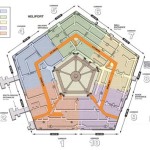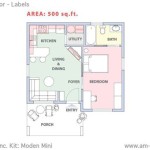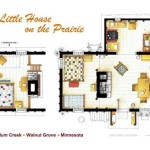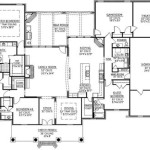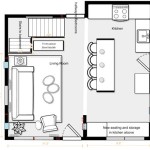The Quintessential Prairie House: Unraveling Frank Lloyd Wright's Architectural Vision
In the annals of American architecture, Frank Lloyd Wright's Prairie Houses hold a special place, embodying his innovative design principles and transforming the landscape of domestic living. Inspired by the vast, rolling prairies of the Midwest, these houses exemplified Wright's belief in organic architecture, where structures harmonized with their surroundings.
Key Features of the Prairie House Plan
The Prairie House plan, meticulously crafted by Wright, showcased several distinctive characteristics:
- Horizontal Emphasis: Long, horizontal lines mimic the expansive prairie landscape, creating a sense of visual continuity with the surrounding environment.
- Overhanging Eaves: Generously extended eaves sheltered the house from the elements while adding a dramatic architectural element.
- Central Fireplace: The fireplace became a central gathering point, creating a communal space and emphasizing the importance of family unity.
- Open Floor Plan: Wright's innovative use of space allowed for interconnected rooms that flowed seamlessly, fostering a sense of openness and fluidity.
- Natural Materials: Wright favored using materials like wood, stone, and brick, which blended harmoniously with the natural surroundings and aged gracefully over time.
Beyond these structural elements, Wright also paid meticulous attention to the integration of indoor and outdoor spaces, creating a seamless transition between the two. Large windows, often reaching from floor to ceiling, flooded the interiors with natural light and invited the landscape into the living spaces.
Influences and Interpretations
Wright's Prairie Houses were not merely architectural creations; they were expressions of his profound connection to nature and his belief in the interconnectedness of all things. The designs reflected the aesthetics of the Arts and Crafts movement, emphasizing simplicity, functionality, and the beauty of handcrafted objects.
Over time, other architects drew inspiration from Wright's Prairie House plan. They interpreted and adapted its principles to create their own unique variations, resulting in a diverse array of Prairie-influenced homes across the country.
Legacy and Significance
The Prairie House plan remains an enduring testament to Frank Lloyd Wright's architectural genius. Its emphasis on organic design, seamless integration of indoor and outdoor spaces, and timeless aesthetic appeal continue to captivate homeowners and architects alike.
The Prairie Houses have become iconic symbols of American domestic architecture, their distinctive features instantly recognizable. They have played a pivotal role in shaping the architectural landscape of the United States and continue to inspire generations of architects and homeowners seeking harmony between design and nature.

Frank Lloyd Wright S Frederick C Robie House A Prairie Masterpiece

F B Henderson House Elmhurst Illinois 1901 Prairie Style Frank Lloyd Wright Robie

Plan Ward W Willits House 1901 Highland Park Illinois Prairie Style Frank Lloyd Wright Architecture Floor Plans

Ad Classics Frederick C Robie House Frank Lloyd Wright Archdaily

Prairie House Plans Monster

Second Floor Plan Ward W Willits House 1901 Highland Park Illinois Prairie Style Frank Lloyd Wright Design Layouts Vintage Plans

Ad Classics Frederick C Robie House Frank Lloyd Wright Archdaily

Floor Plan Of The Robie House Frank Lloyd Wright Hyde Park Illinois 1909 Prairie

Frank Lloyd Wright Prairie Style Homes Plans Mouldings One

Floor Plan Of The Huertley House Frank Lloyd Wright Oak Park Illinois 1901 Vintage Plans


